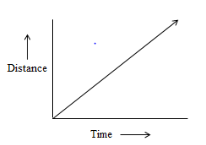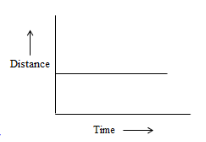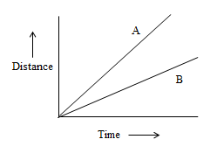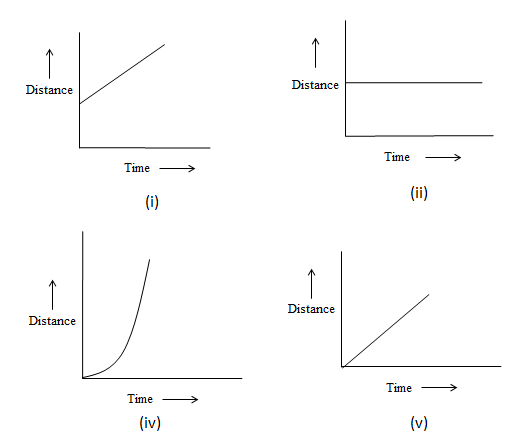How Can Motion And Time Class 7 Questions And Answers Help You Prepare For Exams?
FAQs on NCERT Solutions For Class 7 Science Chapter 9 Motion And Time
1. What are the main types of motion explained in NCERT Solutions for Class 7 Science Chapter 9?
Chapter 9 "Motion and Time" covers three major types of motion:
- Rectilinear (straight-line) motion: Movement along a straight path, such as a car on a straight road.
- Circular motion: Movement along a circular path, for example, a merry-go-round.
- Oscillatory motion: Repetitive to-and-fro motion, like a pendulum or a vibrating electric bell.
2. How do the NCERT Solutions for Class 7 Science Chapter 9 explain the calculation of speed?
The solutions teach that Speed is calculated as the ratio of distance travelled to the time taken, using the formula:
Speed = Distance ÷ Time.
The basic SI unit is meters per second (m/s), but kilometers per hour (km/h) is also commonly used for larger distances, as explained in solved questions following CBSE patterns.
3. What strategy is provided in NCERT Solutions for solving distance-time graph questions?
NCERT Solutions for Class 7 Science Chapter 9 guide students to:
- Plot distance on the Y-axis and time on the X-axis
- Interpret slopes: a straight (non-horizontal) line means constant speed; a horizontal line indicates no motion
- Use step-by-step approaches for plotting and analysis, as per the latest CBSE exam methodology
4. According to NCERT Solutions, what is the difference between uniform and non-uniform motion?
Uniform motion occurs when an object covers equal distances in equal intervals of time, resulting in a straight-line distance-time graph. Non-uniform motion happens when the distance covered per unit time varies; its graph is curved or irregular. The solutions provide multiple examples and solved cases for both types, matching CBSE answer formats.
5. How are measurement units for speed and time emphasized in the Class 7 Science Chapter 9 solutions?
The NCERT Solutions stress that the SI unit of time is the second (s) and the SI unit of speed is meters per second (m/s). Larger practical units like minutes, hours, and kilometers per hour (km/h) are used for real-life applications, as illustrated in solved textbook exercises.
6. What are common mistakes students should avoid when answering motion and time problems, according to expert NCERT Solutions guidance?
Common errors to avoid include:
- Confusing units (e.g., mixing hours with seconds without conversion)
- Misidentifying the motion type
- Incorrect plotting of values on the distance-time graph
7. Why is the concept of 'average speed' important in Class 7 Chapter 9 NCERT Solutions?
Average speed is the total distance travelled divided by the total time taken, especially relevant in non-uniform motion cases. The chapter stresses its calculation and significance in understanding real-life movement, directly supporting CBSE question trends.
8. How is the time period of a pendulum described in the Motion and Time Class 7 NCERT Solutions?
The time period is defined as the time taken for one complete oscillation by a pendulum. Questions in the chapter teach the formula: Time Period = Total Time Taken ÷ Number of Oscillations, with practical numericals relevant for CBSE 2025–26 exams.
9. How does the NCERT Solution approach help students prepare for Class 7 Science Motion and Time exam questions?
Solutions provide:
- Step-by-step, CBSE-aligned answers
- Practice with calculations and graphs
- Clarification of definitions and units
- Discussion of frequently asked concepts and errors
10. What should be done if different units of measurement are given in a Motion and Time problem in Class 7 Science?
Always convert all values to standard units (distance in meters or kilometers; time in seconds or hours) before applying any formula. The NCERT Solutions emphasize unit consistency for accurate answers as per CBSE norms.
11. What makes the NCERT Solutions for Class 7 Science Chapter 9 useful for building analytical skills?
By practicing calculation-based and graph-based questions, students:
- Sharpen logical reasoning
- Enhance data interpretation
- Increase accuracy in choosing methods and units
12. How are motion graphs misinterpreted and what does NCERT guidance recommend?
Common misinterpretations include confusing a flat (horizontal) line as motion at constant speed instead of no motion, or misreading slopes. The NCERT Solutions provide detailed instructions and multiple examples to avoid such errors, as per CBSE standards.
13. What if an object changes speed during the time observed—how is this shown in NCERT Solutions for Class 7 Science Chapter 9?
If an object's speed isn’t constant, its distance-time graph will not be a straight line but a curve. The solutions explain how to recognize and plot variable speed motion graphically, an essential skill for scoring in CBSE exams.
14. Can you explain why precise unit conversion is important in CBSE Class 7 Science Motion and Time questions?
Precise unit conversion is crucial because CBSE marking schemes penalize errors in units. Differences such as seconds vs. minutes, or kilometers vs. meters, can change the final answer completely. NCERT Solutions teach students how to handle conversions systematically for reliable results.
15. How do NCERT Solutions for Class 7 Science Chapter 9 address higher-order thinking questions (HOTs) on motion and time?
HOTs are addressed by including conceptual applications, such as comparing two moving objects using distance-time graphs and calculating average speeds under varying conditions. These go beyond memorization, engaging students in critical analysis in line with latest CBSE 2025–26 exam expectations.





























